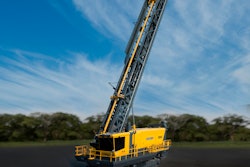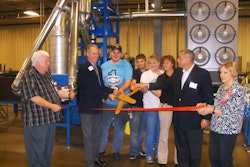Hartfield Technology Company announces the start of phase II testing and development of the revolutionary new Continuous Flow Rotary Vane (CFRV) engine.
The CFRV engine is a revolutionary departure from existing piston and turbine designs and promises the delivery of high thermodynamic efficiency over a broad operating range, low emissions, low production cost and a high power to weight ratio. The design is predicted to achieve better than 40% total efficiency over 50% of the operating range while complying with Tier 4 Final emissions standards. This is dramatically better than today’s piston or turbine designs.
Phase II will produce, test and deploy the proprietary new seal design by C-K Engineering of St. Louis Missouri. Upon the successful completion of seal testing the prototype engine will be live fired and its efficiency measured.
The CFRV engine design resolves two major impediments of today’s piston and turbine designs.
The Problem
Piston designs have and will be burdened by the use of intermittent combustion. Intermittent combustion demands throttling for near stoichiometric mixtures. Stoichiometric mixtures are needed due to the extremely short combustion times required in piston designs; less than a millisecond and throttling reduces compression ratios thus reducing thermodynamic efficiency. Additionally, moving from the Otto cycle to the Atkinson cycle for increased cycle efficiency requires complex timing and mechanisms. Diesels require expensive pre and post combustion treatment to meet emissions requirements, again due primarily to the very short combustion duration and piston environment.
Turbine designs can achieve high thermodynamic efficiencies and burn relatively cleanly due to continuous combustion but have two primary issues, off design operations and very high turbine inlet temperatures. Turbine compressors and power sections are not sealed and need to operate near their maximum design power output to have the compressor and power turbines operate efficiently. When operating at less than approximately 70% power the compressor and power turbine sections “leak” and become less efficient thus lower the designs overall efficiency. This is why gas turbines are primarily found in applications where the engine operates at near full power for long durations such as electric power generation and aviation. Additionally, gas turbines require expensive components in their power section due to the continuous exposure the turbine blades have to the extremely hot combustor gases.
The Solution
The CFRV engine design addresses these issues by utilizing a separate continuous combustion process that doesn’t require throttling and provides a much longer combustion time (thus a cleaner more efficient burn) and a compression and power extracting expansion mechanism in a sealed environment, which doesn’t expose the rotary vanes continuously to the hot combustion gases and provides high efficiency at a much broader range of operating speeds. Additionally, the compression and expansion volumes are different as in an Atkinson cycle and thus extract more work from the combustion product.
The CFRV engine project is the brain child of Dr. Roy R Hartfield, professor of aerospace engineering at Auburn University. It has been a private endeavor and is not supported or affiliated with Auburn University.
Phase I Accomplishments
Phase 1 encompassed the design and manufacture of the 200 hp prototype test bed. The prototype proved the mechanical design integrity and was tested through mechanical motoring and preliminary seals tests. The motoring documented no mechanical conflicts and proved a friction and mechanical loss slightly less than a comparably sized V6 piston engine. The static and dynamic seal tests indicated that while the seal design was adequate the manufacturing of the seals lacked the needed finish, and therefore did not provide the required low leak rate.

















